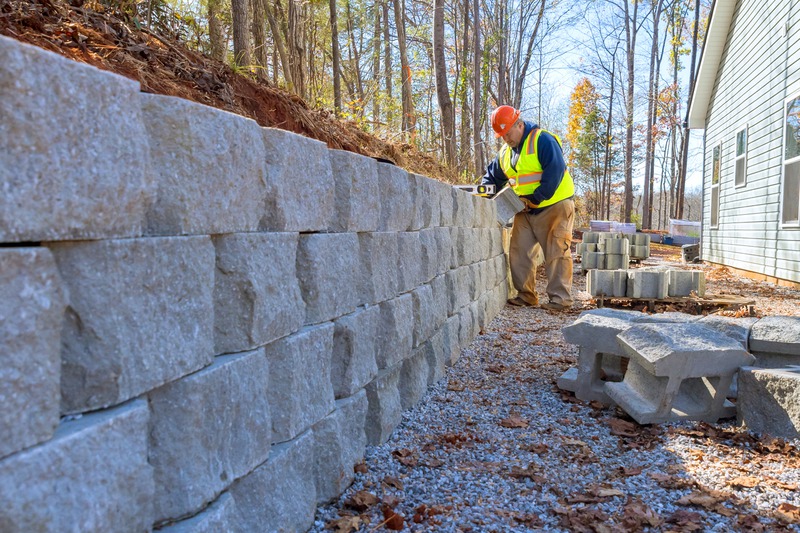How Can You Ensure Long-Lasting Retaining Wall Construction?
- by Carol

Retaining walls are excellent for adding structure and beauty to landscapes. To ensure durability, start with a solid foundation and use quality materials like concrete, stone, or brick. Ensure proper drainage to prevent water buildup behind the wall, which can cause damage. Reinforce larger walls with geogrid or tie-backs for extra stability.
It’s crucial to plan the wall’s height and angle carefully, considering the slope and soil type. Hiring a professional can help with complex projects, ensuring a functional, long-lasting, and visually appealing retaining wall.
Start with a Solid Plan
Before you start laying bricks or pouring concrete, you need a comprehensive plan. Consider factors such as the purpose of the wall, the type of soil in your area, and the climate conditions. Based on these criteria, it’s essential to choose the right materials.
-
Purpose: Is the wall intended to hold back soil, or is it mainly a decorative feature?
-
Soil Type: Different soils have different load-bearing capabilities, which can affect the choice of materials and design.
-
Climate: Freeze-thaw cycles and seasonal changes can impact the wall’s durability.
Select the Right Materials
The choice of material is crucial for the longevity of your retaining wall. Natural stone, concrete blocks, and timber are common options, each with its pros and cons.
-
Natural Stone: Durable and aesthetically pleasing, though it can be expensive.
-
Concrete Blocks: Cost-effective and versatile, suitable for various designs.
-
Timber: Provides a natural look but may not last as long as stone or concrete.
Whether you tackle the project yourself or seek help from professionals like a concrete company Fort Worth, the key is to focus on quality and long-term maintenance with the right materials.
Proper Drainage is Key
Water can be a retaining wall’s worst enemy. Without proper drainage, water buildup can lead to pressure that causes the wall to crack or bow. To prevent this, include a drainage pipe in your design and ensure backfill materials are permeable to allow water to escape.
Install a Drainage Pipe
A drainage pipe positioned at the wall’s base helps direct water away, safeguarding the structure. Proper angling is crucial; gravity should assist in guiding the water flow smoothly. This setup prevents water accumulation, reduces pressure on the foundation, and minimizes potential damage, ensuring long-term stability and protection for the building.
Focus on Foundation
Just like any structure, a retaining wall needs a solid foundation. Start by digging a trench deep enough to accommodate the base material, typically about a third of the wall’s height.
-
Base Material: A well-compacted layer of gravel or crushed stone provides stability and drainage.
-
Leveling: Ensure the base layer is perfectly level to prevent any leaning or settling over time.
Reinforce When Necessary
Depending on the wall’s height and purpose, reinforcement may be required. This can be achieved using geogrid, steel reinforcements, or additional anchors.
Using Geogrid
Installing geogrid can add extra stability to taller walls. It’s a fabric-like material that’s layered within the wall to spread loads and add strength.
Consider Aesthetic Elements
While functionality is paramount, aesthetics should not be overlooked. Retaining walls can blend seamlessly with your landscape or serve as a focal point. Use various textures, colors, and patterns to create a visually appealing structure.
-
Textured Blocks: Add dimension and interest to flat surfaces.
-
Plantings: Incorporate greenery for a more natural look.
For those considering building outdoor spaces, hiring professionals such as Fort Worth deck builders can be beneficial. They often have the expertise to integrate retaining walls beautifully with decks and patios.
Regular Maintenance
Even the best-built walls require some maintenance to ensure longevity. Here’s what you can do:
-
Check for Cracks: Small cracks can often be repaired with sealant, but larger issues may require professional help.
-
Inspect Drainage: Ensure drains are clear and functioning to prevent water buildup.
-
Remove Vegetation: Keep plants from growing too close, as roots can cause damage over time.
Professional Installation Benefits
While a DIY approach can be tempting, professional installation offers several advantages. Experts are well-versed in the requirements for building long-lasting structures and can resolve unexpected challenges efficiently.
When hiring, look for a patio installation service in Fort Worth that has a strong reputation for quality and reliability. This ensures that your retaining wall will be built to the highest standards.
Environmental Factors to Consider
When planning your wall, don’t overlook the impact of local environmental factors. Sun exposure, wind direction, and potential erosion can all affect the wall’s design and materials. Factor in these elements to enhance both durability and stability.
Final Thoughts
Constructing a durable retaining wall requires meticulous planning, choosing suitable materials, ensuring efficient drainage, and considering its visual appeal. By addressing these aspects, the wall enhances property value and longevity. Proper design and materials prevent soil erosion, while good drainage avoids water damage, ensuring the wall remains sturdy and attractive over time.
Retaining walls are excellent for adding structure and beauty to landscapes. To ensure durability, start with a solid foundation and use quality materials like concrete, stone, or brick. Ensure proper drainage to prevent water buildup behind the wall, which can cause damage. Reinforce larger walls with geogrid or tie-backs for extra stability. It’s crucial to…

Get more stuff
Subscribe to our mailing list and get interesting stuff and updates to your email inbox.
Thank you for subscribing.
Something went wrong.
we respect your privacy and take protecting it seriously
